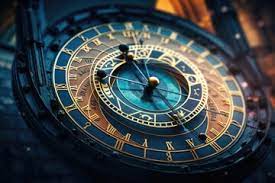Jam di Seluruh Dunia: Perjalanan Melintasi Waktu

Jam telah menjadi bagian dari sejarah manusia selama ribuan tahun, dan dapat ditemukan di berbagai budaya dan lokasi di seluruh dunia. Dari jam mekanis berornamen di Eropa hingga jam matahari kuno di Mesir, jam hadir dalam berbagai bentuk dan ukuran, mencerminkan konteks budaya dan sejarah unik di mana jam tersebut diciptakan. In Europe, clocks have a long and rich history, dating back to the Middle Ages. Mechanical clocks were first developed in the 13th century, and quickly became a symbol of wealth and power. Clock towers, such as the famous Big Ben in London, still stand as iconic landmarks in many European cities. In the Middle East, Islamic civilization played a significant role in the development of early mechanical clocks. Water clocks, also known as clepsydra, were commonly used in mosques to determine the time for prayer. These clocks were also used to regulate the irrigation systems in agriculture. In China, the development of water clocks and astronomical instruments dates back to the Han Dynasty. The Chinese invented the first mechanical clock, known as the Su Song clock, which was designed to be an astronomical instrument. The clock featured a rotating armillary sphere, which was used to measure the positions of stars and planets. In India, ancient sundials were used to tell time. The most famous of these is the Jantar Mantar observatory in Jaipur, which features a collection of large sundials and astronomical instruments. In South America, the Incas used a system of knotted strings, known as quipus, to keep track of time and record historical events. The quipus were made of colored strings that were knotted in various ways to represent numbers and dates. In Africa, the ancient Egyptians used sundials to tell time. They also used water clocks, which were filled with water that would gradually drain out, marking the passage of time. In conclusion, clocks have a rich and diverse history that reflects the unique cultural and historical context in which they were created. From the mechanical clocks of Europe to the sundials of Egypt, clocks come in all shapes and sizes, and have played an important role in how we measure and manage time throughout human history.